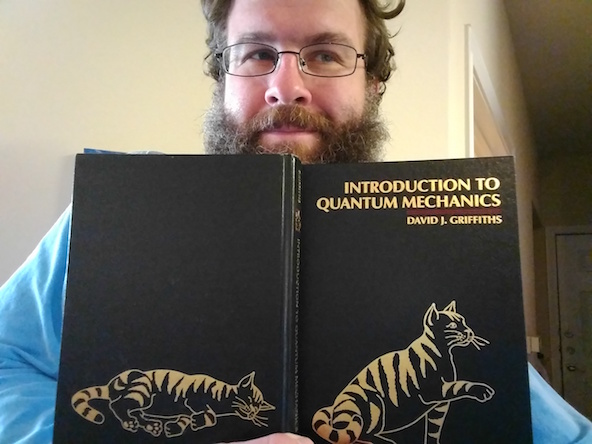Schroedinger's Cat |
Follow @wogsland
22 December 2016
|
Erwin Schroedinger was a wunderkind, but he didn't discover the equation which bears his name until his late 30's. This is a rarity in physics, where many do their best work before the age of 30. He also chose an apolitical route during WWII, emigrating from Austria to the neutral country of Ireland for the duration of the war. He lived something of an unconventional life. While physicists are forever solving the Schroedinger Equation, popular culture remembers him for a gedankenexperiment he thought up to explain quantum mechanics on a macroscopic scale. 
Being somewhat daft and used to animals on O'Reilly books in my computer science classes, I just thought the cat on the back of my college quantum mechanics textbook was asleep. It's not. It's dead. In Schroedinger's gendankenexperiment the cat is in a box into which prussic acid has possibly been released by the radioactive decay of some element. Until you look in the box, that is, conduct an experiment, the cat is a superposition of live cat and dead cat. Since when exactly radioactive decay occurs is indeterminate, one can only calculate the probability that it has occurred or not occurred and thus the probability that the cat is dead or alive. When you open the box and take a look, you collapse the wavefunction. The assumption is, of course, that you can open the box. And that you want to. Philosophers have had a field day surrounding the interpretation of the experiment. My description of it even belies my own leanings I would imagine. |
